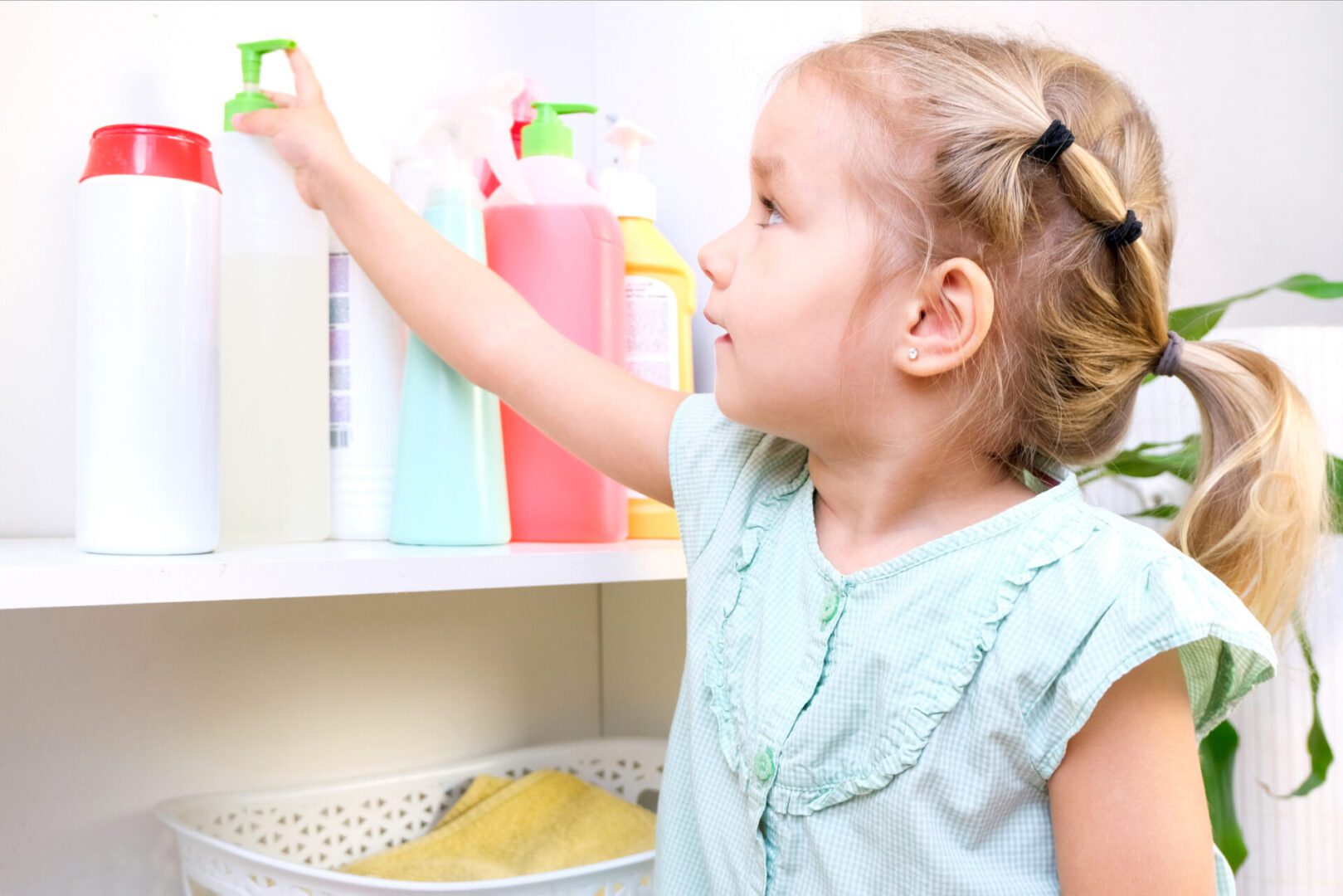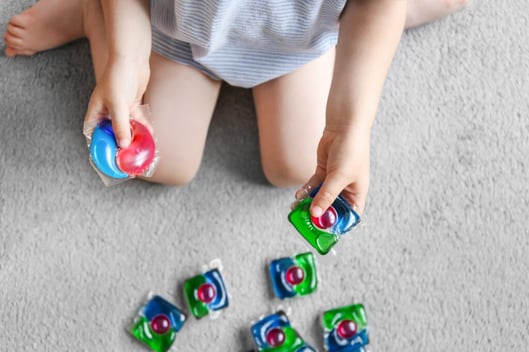Poison Prevention Tips and Treatment Options: A Guide for Families

It’s a parent’s worst nightmare. It’s early evening, and you’ve just set your toddler down to play while you tackle a sink full of dishes. Nearly finished, you turn to check on your little one, only to find them hiding under the table with a dish detergent pod in their mouth. What do you do? If you have small children in the home, you probably already know the importance of keeping prescription and OTC medicine out of sight and reach. However, medicine is not the only toxic household substance to be wary of. According to recent statistics from the National Capital Poison Center, cosmetics and personal care products are the most frequently implicated substance in pediatric poison exposures, followed closely by cleaning products. Other well-known household hazards include:
 Adults have been known to make similar errors, such as the case of the Michigan woman who grabbed a bottle without looking and
mistakenly used nail glue instead of her eye drops. Many cases of accidental adult poisoning occur due to this kind of inattention. To prevent dangerous mix-ups from occurring, keep all potential poisons locked up and out of reach of children and pets. Avoid storing poisonous substances with food or in empty food and drink containers. When dealing with medication or personal care items, be sure to read the label carefully before using the product yourself or giving it to someone in your care.
Adults have been known to make similar errors, such as the case of the Michigan woman who grabbed a bottle without looking and
mistakenly used nail glue instead of her eye drops. Many cases of accidental adult poisoning occur due to this kind of inattention. To prevent dangerous mix-ups from occurring, keep all potential poisons locked up and out of reach of children and pets. Avoid storing poisonous substances with food or in empty food and drink containers. When dealing with medication or personal care items, be sure to read the label carefully before using the product yourself or giving it to someone in your care.
- Insecticides
- Rodenticides
- Antifreeze
- Foreign objects such as batteries
- Paint
- Certain houseplants
- Essential oils
The danger of lookalikes
Young children may be unable to distinguish brightly colored toilet cleaner from their favorite juice, or a laundry pod from gummy candy. Adults have been known to make similar errors, such as the case of the Michigan woman who grabbed a bottle without looking and
mistakenly used nail glue instead of her eye drops. Many cases of accidental adult poisoning occur due to this kind of inattention. To prevent dangerous mix-ups from occurring, keep all potential poisons locked up and out of reach of children and pets. Avoid storing poisonous substances with food or in empty food and drink containers. When dealing with medication or personal care items, be sure to read the label carefully before using the product yourself or giving it to someone in your care.
Adults have been known to make similar errors, such as the case of the Michigan woman who grabbed a bottle without looking and
mistakenly used nail glue instead of her eye drops. Many cases of accidental adult poisoning occur due to this kind of inattention. To prevent dangerous mix-ups from occurring, keep all potential poisons locked up and out of reach of children and pets. Avoid storing poisonous substances with food or in empty food and drink containers. When dealing with medication or personal care items, be sure to read the label carefully before using the product yourself or giving it to someone in your care.
When to suspect poisoning
Symptoms of poisoning may include:- Burns or redness around the mouth
- Chemical smell on breath
- Vomiting
- Difficulty breathing
- Drowsiness
- Confusion